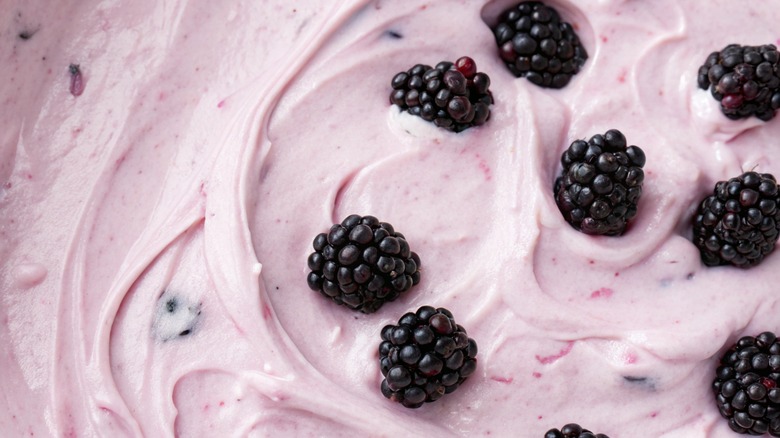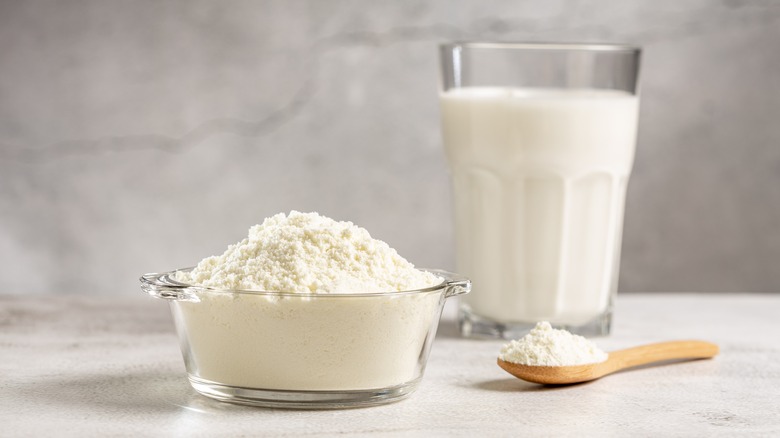Boost Store-Bought Yogurt's Texture With This High-Protein Add-In
Yogurt's invention may have originally been an accident, but our love for this creamy, tangy, protein-dense snack certainly isn't. Since its serendipitous invention by the Mesopotamians over 7,000 years ago, humans have developed many different traditional varieties of yogurt, from ultra thick and velvety Greek yogurt to plant-based versions made by fermenting soy, coconut, or almond milk. As there's so many options to choose from, most of us have a favorite type, opting for American-style yogurt for the soft texture and mild flavor, or preferring Icelandic skyr yogurt for its dense richness.
One of the many reasons Americans in particular are a little obsessed with yogurt is its protein content. After all, a bowl of vanilla skyr topped with walnuts and a drizzle of honey offers a fast, delicious way to pack in the protein with your breakfast or mid-afternoon snack. However, some types of yogurt have more protein than others, so your go-to choice might not be as nutrient dense as you thought. Additionally, some argue that the texture of store-bought yogurt tends to be overly loose and watery due to mass production.
Fixing both of these issues is as simple as embracing an old-school kitchen staple our grandmothers swore by: powdered milk, which is simply regular milk with all of the water evaporated away. With about 9 grams of protein per quarter cup, powdered milk thickens your yogurt by drawing in moisture as you stir them together, resulting in a denser, creamier texture along with a significant protein boost.
Why choose milk powder over other thickeners?
Though dried milk powder isn't the only way to thicken up your yogurt, it offers several substantial advantages over the alternatives, namely nutritional value. Thickeners like gelatin, cornstarch, and techniques like straining may give you a firmer, denser yogurt, but they don't increase its protein content or add any additional nutrients dairy milk provides, such as calcium and vitamin D. Dried milk powder is also fairly easy to use — all you have to do is add 1 part milk powder to 4 parts yogurt and stir.
Of the other techniques for thickening your yogurt, straining is the simplest, as it involves suspending your yogurt in fine mesh over another container and draining off the excess liquid. However, this takes several hours, minimum, and leaves you with whey as a byproduct, meaning you either need to find a use for it or be okay with discarding it in the trash (not down the sink), which may feel wasteful. Cornstarch may seem like a good alternative, but your yogurt can easily get clumpy or too stiff if your ratios are off, whereas powdered milk easily returns to its original liquid state.
Additionally, though it will give your yogurt a dense, smooth texture, gelatin is notoriously tricky to bloom, and won't impart the same creaminess as powdered milk. In fact, it can be difficult to get a creamier texture with most alternative thickening techniques because powdered milk is the only option that contains milk fat essential to achieving the thick, spreadable texture common to richer styles of yogurt.

